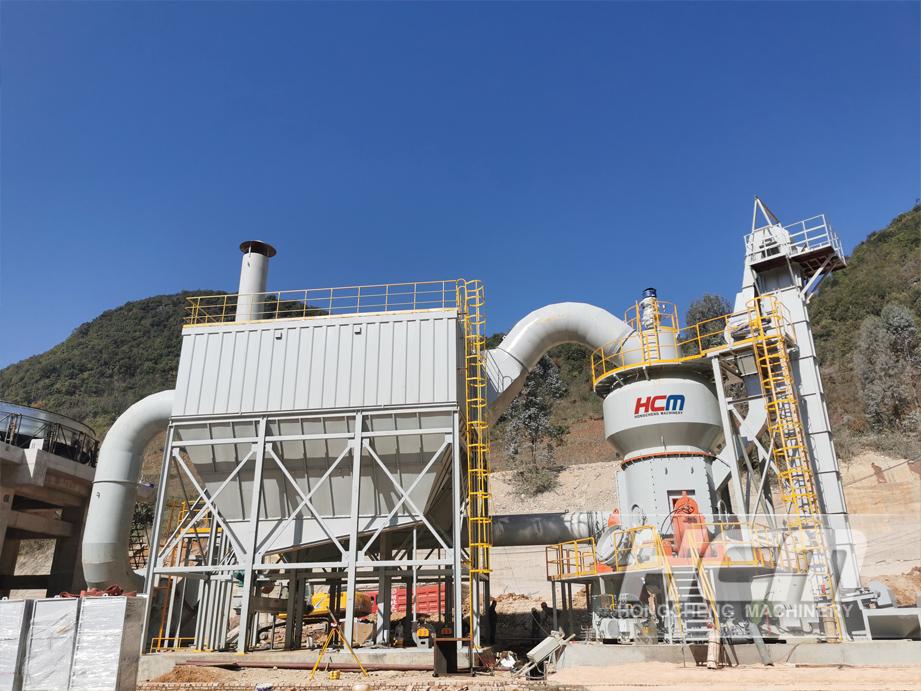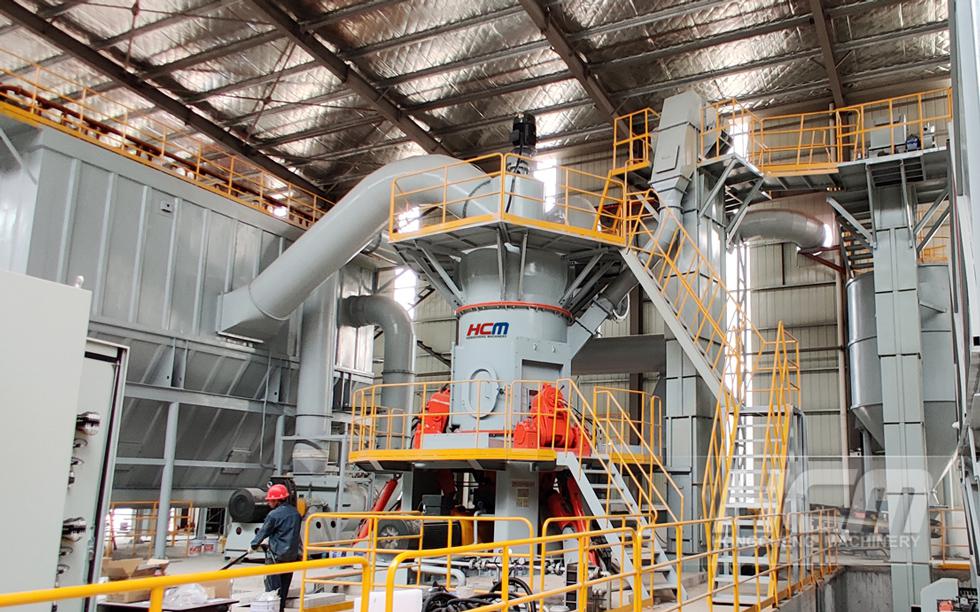The degree of environmental pollution continues to increase, and the recycling and reuse of ceramic waste is the focus of attention. The full application of ceramic waste to produce building materials can improve resource utilization and reduce environmental damage. HCMilling(Guilin Hongcheng) is a manufacturer of ceramic waste grinding mill machines. The following is an introduction to the technology of ceramic waste recycling.
Classification of ceramic waste
In the production process of ceramic products, the waste generated according to different processes can be divided into the following categories:
1. Green waste mainly refers to the solid waste formed before the ceramic products are fired, which is generally caused by the blocking of blanks in the production line and the collision of blanks. Green waste can generally be used directly as ceramic raw materials, and the addition amount can reach 8%.
2. Waste glaze refers to the solid waste formed after purification due to wrong ingredients of color glaze or sewage (except for the grinding, polishing and edge grinding and chamfering of polished tiles) during the production and manufacture of ceramic products. , This kind of waste usually contains heavy metal elements, toxic and harmful elements, and cannot be discarded directly. It requires specialized recycling institutions for professional recycling.
3. Firing waste porcelain refers to the solid waste caused by deformation, cracking, missing corners, etc. of ceramic products during the calcination process and damage to the ceramic products during storage and handling.
4. Waste gypsum, in the actual production process of daily ceramics and sanitary ceramics, needs to use a large number of gypsum molds. Because of its low mechanical strength, it is very easy to damage, so the service cycle is not long and the service life is short.
5. Waste saggar, the kiln in the ceramic firing process uses heavy oil or coal as the core fuel. Due to the incomplete combustion of the fuel, a large amount of free carbon will be generated, which increases the risk of pollution of ceramic products, so daily ceramic products are mostly used. calcined by heating. The most economical way of muffle heating is to use saggar for calcination, and some manufacturers also need to use saggar when producing floor tiles with smaller specifications. The saggar is subjected to the thermal effect caused by the temperature difference between the room temperature and the kiln calcination temperature (about 1300℃high temperature) for many times during the use process.
6. Polished tile waste. Thick glazed tiles and porcelain tiles need to be smooth, delicate and mirror-like polished tiles after deep processing procedures such as milling and leveling, grinding and chamfering, grinding and polishing. Polished tiles are currently popular products on the market, and their sales are increasing rapidly, driving thousands of polished tile production lines across the country to continuously increase their output. There will be a lot of waste such as brick scraps.
The application of ceramic waste in building materials
1. Production of lightweight and high-strength building ceramic plates: Based on the analysis of applied disciplines, the plate itself is defined as sawn timber with a ratio of width size to thickness size of 2:1. The ceramic lightweight plate itself has excellent flexural strength and moisture resistance, and fully uses a large amount of polishing waste to realize the efficient application of ceramic solid waste at an essential level, which is in line with the current sustainable development of lightweight and environmentally friendly materials. The production process of ceramic lightweight plate, this process solves the technical bottleneck of lightweight plate production from the source: first, raw material processing. In the formal production process, the raw materials are divided into types and stacked to improve the utilization rate of various raw materials. Second, to avoid product deformation. In order to control the deformation of the product from the essential level, it is necessary to take the formula structure and firing method as the core entry point. Third, the problem of uniform pores inside the lightweight sheet. In order to make the pores have a certain uniformity, it is necessary to rationally control the firing temperature and the stability of the raw materials.
2. Production of thermal insulation ceramic tiles: thermal insulation ceramic tiles have the advantages of high strength, strong rain penetration resistance, low thermal conductivity, etc., which can further reduce the actual energy consumption of current buildings, and are the most ideal green construction materials. Energy saving and consumption reduction targets have a positive effect. The full use of ceramic polishing waste residues to produce thermal insulation materials is generally divided into two categories, namely inferior raw materials and auxiliary raw materials. Among them, various additives in the auxiliary raw materials are very important to improve the optimization process and further improve the performance of the product itself.
3. Production of non-burning bricks: Many scholars in China have conducted a lot of research on the recycling application of ceramic waste. In the actual production process, the sintering process is used. For example, the waste slag of ceramic polishing bricks is used as the core raw material. After a series of practical operations, the overall quality and performance of the final production are excellent. of lightweight exterior wall tiles. It should be emphasized that the use of sintering process in the production process can use ceramic waste, which is not economical and causes more serious pollution to the environment. Domestic use of fly ash to produce non-burning bricks is more research, and the use of ceramic polishing waste to prepare non-burning bricks is less. Some researchers use different ratios of ceramic polishing to powder, waste ceramic tiles and cement to produce non-burning bricks with different strengths. Ceramic polishing brick powder is a kind of waste residue with strong activity, and its internal active components can react with cement, and finally form new cementitious substances, which further enhances the strength. The raw materials of unburned bricks can save the actual amount of cement and have good economy.
4. Preparation of new environmentally friendly composite concrete: As the core construction material of modern construction projects, concrete is not only widely used in civil engineering, but also an important material in geothermal, marine, machinery and other fields. The chemical composition contained in the ceramic waste is relatively close to the composition of the concrete itself, and its use in concrete production can reduce the consumption of natural resources and provide a new path for the practical application and treatment of ceramic waste.
5. Preparation of green ceramic products: Green ceramics mainly refers to the scientific application of natural resources. The actual production process has the characteristics of environmental protection and low energy consumption. Green ceramic products are non-toxic, reduce resource consumption as much as possible, and improve their practical application efficiency. In the context of low carbonization, the ceramic field needs to actively focus on the development of green ceramics, improve resource utilization and reduce environmental pollution. The thinning of ceramic tiles is mainly based on the fact that the actual thickness of the ceramic tiles is gradually reduced without interfering with their own practical application functions, and the thickness of the ceramic tiles themselves is reduced, which can significantly reduce the consumption of various resources in production and achieve the goal of building load reduction. The future development trend of carbonization.
As a complex work, ceramic production has many internal production processes, and it is easy to generate a large amount of waste materials. If it is not properly handled, it will have a serious impact on the environment. As the construction industry enters a state of good development, it is necessary to make full use of ceramic waste to produce a variety of building materials and improve the utilization rate of waste. Ceramic waste pulverizer is the main equipment for the recycling of ceramic waste.
HCMilling(Guilin Hongcheng) as a manufacturer of ceramic waste grinding mill, the ceramic waste grinding mill we produced have been widely used and good in ceramic waste recycling projects. ‘s reputation. If you have related needs, please contact HCM online and provide follow information to us:
Raw material name
Product fineness(mesh/μm)
capacity (t/h)
Post time: Aug-29-2022










